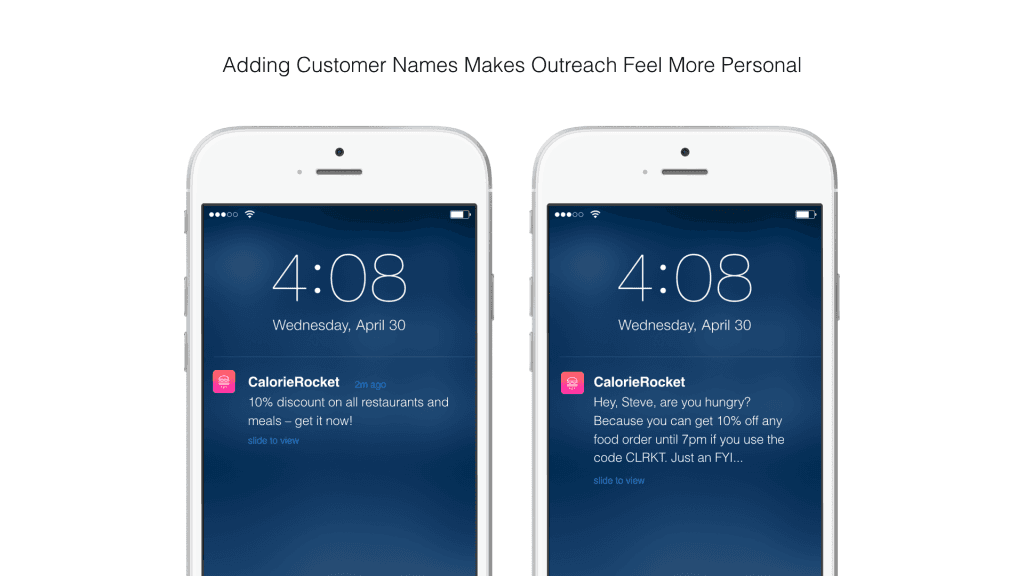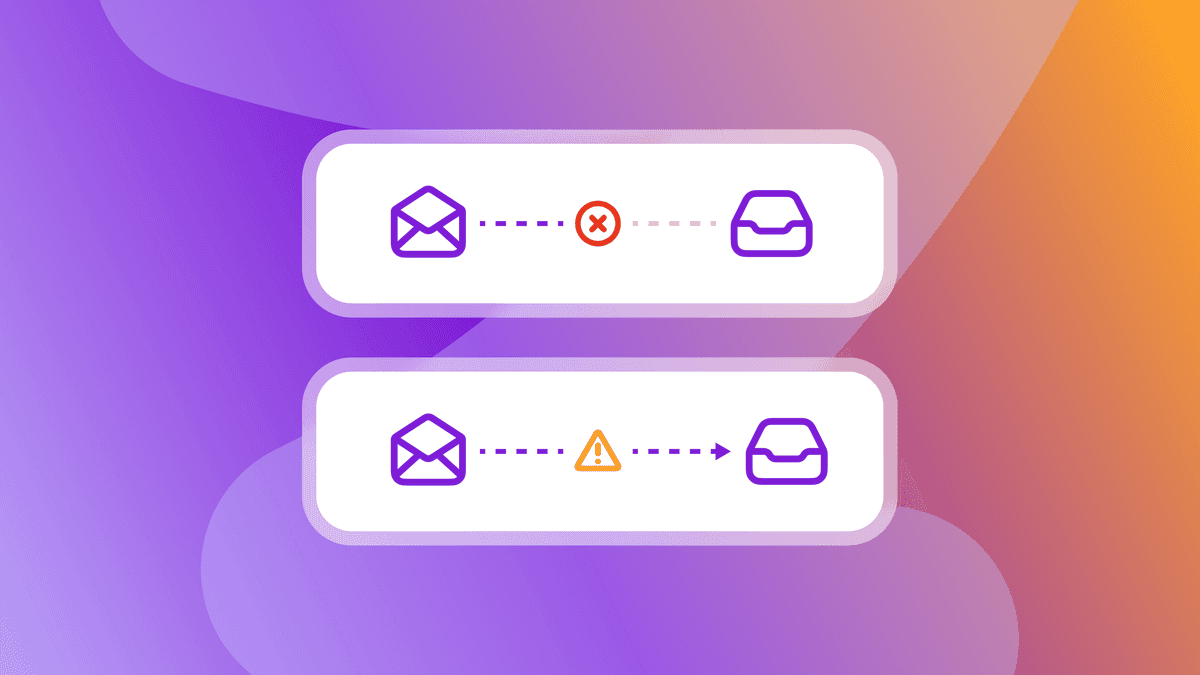Personalization for Beginners: Hi, {{${first_name}}}
Published on December 02, 2015/Last edited on December 02, 2015/8 min read


Todd Grennan
Content Production Principal, Content Marketing at BrazePersonalization is a powerful tool. But if you don’t have any experience using it as part of your customer outreach, it can be a little scary. After all, personalizing effectively means marshalling the data you collect on your customers and figuring out how to add it to your messages in ways that add value.
The good news is that there’s an easy way to get started, a beginner-friendly type of personalization that offers outsized benefits: name-based personalization. That is, adding your customers’ names to the messages you send them. It’s simple, powerful, and a great way to dip your toes into personalization.
How does name-based personalization work?
At its core, personalization is about taking the information that you have about your customers––who they are, what they care about, how they interact with your brand––and using it to inform your messaging and experiences. That can mean inserting information from your audience profiles directly into messages, but it can also mean using that information to determine which version of a message each customer is sent, and more.
Name-based personalization is an example of the former. When you send a message using this kind of personalization, you’re pulling each recipient’s name from their customer profile and adding it wherever you feel it works best. That means that the message will be individually customized for each recipient to ensure that they’re being addressed by the name in their customer profile.
If your marketing technology solution supports name-based personalization and you’ve been collecting customer names in your audience profiles, taking advantage of this kind of personalization is as easy as indicating where you want customer names inserted before you send your campaigns. It’s that simple.
What happens when you don’t know one of your customers’ names?
One of two things. If you send a campaign to a segment of your audience and not all segment members have provided their name, the message will go out like normal, but the place where the name was intended to go will be left blank. So, instead of saying “Hi Siobhan” or “Hi Dikembe,” it’ll just say “Hi .”
If you want, you can set a default that will show up in the place of that empty space. But finding something that works well is pretty tough: would you really want to receive push notifications addressed to “you” or “friend” or “valued customer”? (Using “there”––as in “Hi there”––is probably the best option.) So, when possible, it makes sense to target your messages with name-based personalization to customers in your audience whose names you actually know.
Why start with name-based personalization?
1) It’s easy to visualize how name-based personalization will work
If you regularly receive messages from the apps you’ve downloaded and brands you buy from, the odds are good that you’ve already received an email or a push notification that uses name-based personalization to address you as an individual. And that makes it possible to picture what adding this kind of personalization to your brand’s messages will look like, making it less scary to send that first personalized campaign.
2) It’s taking advantage of data you probably already have
While some forms of personalization––like dynamic content personalization, for instance––work best when there is detailed customer information to draw on, name-based personalization requires only one piece of data: customer names. (That was what you were guessing, right?) And while not every customer is going to provide you with their name, you’re likely already working to collect this information from your audience when possible, making it easy to get started with your available data.
3) It’s available for all major messaging channels
Maybe your brand currently only sends emails to reach customers. Or maybe you’re focused on mobile messaging channels like push notifications and in-app messages. Either way, name-based personalization will work with the messaging channel of your choice, allowing you to enjoy the benefits of this kind of individual customization as you engage your customers.
What are the benefits of name-based personalization?
1) People are particularly attuned to their names––so they notice your outreach
Most of us have had the experience of being somewhere and thinking that your name is being called––only to find out that it’s someone else’s name or just a word that sounds similar. But for that brief moment that you’re sure (wrongly) that someone’s trying to get your attention, there’s a charge, a sense that you’re missing something important.
It turns out that there’s some science behind that feeling. Studies suggest that when someone hears their name said aloud, it activates a specific region of their brain that’s related to an array of self-representational behaviors. Our reaction to our own name is distinctly different than the way we react to other words or even other names, and that special resonance can be an asset to your messaging.
When you reference a customer’s name, they NOTICE. That doesn’t mean that they’re necessarily going to be interested in your message’s call to action, but it does mean that they’re particularly likely to look at your outreach and pay attention.
2) Using names can build intimacy and trust, strengthening customer relationships
Too often, customer outreach feels like a generic sales pitch blasted out to anyone and everyone possible. That can alienate customers, make them feel anonymous and unappreciated. To succeed over the long haul, brands need to build long-term relationships with their customers, and that’s not going to happen if you treat them carelessly.
That being said, you still need ways to tell your customers about upcoming sales, new app features, and other information that will make them value your brand. Name-based personalization can help. Using customers’ names can reinforce that your brand knows who they are and values them as individuals.

Even if you’re trying to encourage someone to make a purchase, it’s possible to do it in a way that feels respectful and honest. Think about how you’d tell a friend who trusts your judgment about an opportunity that you think will serve their interests and use that as the model for your language. Say their name. Explain what the benefits are. And then let the offer speak for itself.
3) Personalized messages outperform non-personalized ones
People like personalization. That’s particularly true for younger customers, with 90% of people between the ages of 18 and 34 saying they strongly value personalization; however 82% of those older than 45 agree, suggesting that personalizing your outreach is important no matter how old your target audience is. And when brands cater to those preferences and send messages to their customers that are personalized, they see 27% more conversions than brands that don’t.
Things to avoid when using name-based personalization
1) Distracting customers from your call to action
Successful customer outreach works because you’re selling your audience on the relevance of each message to their personal interests and needs, and because the information you’re sharing is valuable to them as individuals. If adding a customer’s name to your message furthers that goal, then this kind of personalization makes sense. But if including their name feels jarring or out of place, you run the risk of drawing attention away from what the message is trying to get across, making your efforts counterproductive.
2) Creeping out your customers
Done wrong, personalization can be creepy––and creeped-out customers aren’t happy customers. Name-based personalization is less prone to this issue than some forms of personalization, but you should still give thought to whether your use of personalization is likely to rub customers the wrong way.
One big thing to avoid is sending messages with name-based personalization to customers who haven’t knowingly shared their name with your brand. Having a stranger address you by name is often unsettling and unpleasant, and the same goes when you’re hearing from a brand. A strong relationship requires buy-in from both sides: don’t try to force it by aping an intimacy that you haven’t earned yet.
3) Overuse
Name-based personalization can add a lot to your messages––but if you include customer names in each and every campaign you send, even loyal members of your audience may feel like it’s a bit much. Because including names is a great way to grab customers’ attention, consider using this kind of personalization in situations where there’s something special that you want to highlight: for instance, an unusually compelling promotion, a major new app feature, or a piece of content that’s especially likely to be of interest to the people receiving it.
What now?
Name-based personalization is a great starting point when it comes to individually customizing the outreach that you send to your customers, but you shouldn’t stop there. Check out our piece on how to make effective and appealing use of the full spectrum of personalization options to learn more!

Related Tags
Be Absolutely Engaging.™
Sign up for regular updates from Braze.
Related Content
View the Blog
Hard bounce vs. soft bounce: Key differences and how to reduce email bounces

Team Braze

How iOS 18 is shaping customer engagement—and what marketers can do about it

Haley Trost

Harnessing machine learning in marketing: Benefits, use cases and best practices
